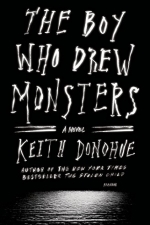
PhotoPills
Photo & Video and Education
App
Unlock your creative potential! Discover how to easily turn any Sun, Moon and Milky Way scene you...

Find My Fitbit - Finder App For Your Lost Fitbit
Health & Fitness and Utilities
App
Find Your Lost Fitbit Fast. Need Help Finding Your Fitbit? Find Your Fitbit In Minutes. Try The App...

Song Sleuth: Auto Bird Song ID
Reference and Education
App
Song Sleuth turns your iPhone or iPad into an automatic bird song identifier covering the 200 most...
FreshMenu: Food Ordering App
Food & Drink
App
Craving for a meal without the hassles of cooking or stepping out? The FreshMenu food delivery app...

Find my Fitbit
Health & Fitness and Utilities
App
The Most Accurate And Precise "Find my Fitbit" App. Check For Yourself! We are so convinced that...
Hadley (567 KP) rated Those Bones Are Not My Child in Books
Nov 12, 2019
Bambara writes not in a normal narrative - - - just telling a story from specific viewpoints, but she often breaks off into smash poetry to depict a character's state-of-mind, which, sometimes can be off putting for the reader, breaking the flow of the story. Yet, the use of smash poetry combined with the era and the heart breaking subject at hand, separates Those Bones Are Not My Child from every True Crime book I have ever read. But a note for fans of True Crime, this story is from the view point of the victims' families and the search they went through to try and catch the murderer(s), unlike most TC books, which follow the police through the investigation leading to, usually, the capture of the perpetrator. From living in Atlanta during the time of the murders, Bambara was able to reconstruct the life of a black family in 1980's Georgia, while focusing on the effect these terrible crimes had on the surrounding community. Bambara did an amazing job on what most writers cannot.
The amount of characters, specifically the fictional ones, are very well created. She describes just enough to give readers the ability to tell them apart, showing every now and then from their own viewpoints. Out of all the characters, I came to really like Zala's two other children: Kenti and Kofi. One particular scene shows the strain of Sonny's disappearance on their family: " Zala parked the comb again and sat back. 'Listen, you two.' Kofi dropped down onto his knees. 'The police and the newspapers don't know what the hell is going on, so they feel stupid, because they're supposed to know, they're trained to know, they're paid to know. It's their job. Understand? But it's hard for grown-ups to admit they're stupid, especially if they're professionals like police and reporters. So they blame the children. Or they ignore them and fill up the papers with the hostages in Iran. Understand? And now... Jesus... they've got people calling those kids juvenile delinquents.'
'Don't cry.' Kenti tried to lean into her lap and got pushed away.
'They don't know a damn thing and they act like they don't want to know. So they blame the kids 'cause they can't speak up for themselves. They say the kids had no business being outdoors, getting themselves in trouble.'
'You let us go outdoors.'
'Of course I do, baby. We go lots of places, 'cause a lot of people fought hard for our right to go any damn where we please. But when the children go out like they've a right to and some maniac grabs them, then it's the children's fault or the parents who should've been watching every minute, like we don't have to work like dogs just to put food on the table.'
Kofi walked on his knees towards the bed, but he didn't lean on her like he wanted 'cause she might push him away. So he just put his hand on the mattress next to hers."
During the Atlanta Child Murders, victims were random, except for that they were children from the same neighborhood, and they were African-American. At first, police didn't believe a serial murderer was going around abducting children, but rather that 'poor, broken' families were killing their own. In the Prologue, Bambara shows that the victims' families and private detectives came up with more ideas of the motive than the police did:
" White cops taking license in Black neighborhoods.
The Klan and other Nazi thugs on the rampage.
Diabolical scientists experimenting on Third World people.
Demonic cults engaging in human sacrifices.
A 'Nam vet unable to make the transition.
UFO aliens conducting exploratory surgery.
Whites avenging Dewey Baugus, a white youth beaten to death in spring '79, allegedly by Black youths.
Parents of a raped child running amok with 'justice.'
Porno filmmakers doing snuff flicks for entertainment.
A band of child molesters covering their tracks.
New drug forces killing the young (unwitting?) couriers of the old in a bid for turf.
Unreconstructed peckerwoods trying to topple the Black administration.
Plantation kidnappers of slave labor issuing the pink slip.
White mercenaries using Black targets to train death squadrons for overseas jobs and for domestic wars to come. "
All of these theories are explored with evidence in Those Bones Are Not My Child. One scene in Part III, Zala's cop friend, B.J. shows up to her house to tell her to stop bringing attention to the investigation, " 'That Eubanks woman - - - your husband's friend? - - - she said you were bringing in the TV networks to blow the case open. I thought we had an agreement to keep each other informed. This morning I find out through the grapevine that you parents got a medium stashed in a hotel here in town, some woman who's been making headlines up north with cases that supposedly have the authorities stumped. If you knew how much work has been done on this case - - - no, listen, don't interrupt me. Then I find out - - - and not from you - - - that some of you parents are planning to tour the country cracking on the investigation. That's not too smart. And you should have told me.' " These two may have been fictional characters, but in Bambara's Acknowledgments, she states that all scenarios were true, and that she made B.J. to tell about the actual police officers who were involved with the investigation.
The tension between the police and the public is felt throughout the entire story. Despite all of the work the citizen task force put in, police arrested a man named Wayne Williams for the murder of two adult victims (who, due to their mental age, which was stated to be that of children, were placed on the victims' list of the Atlanta Child Murders): " Wayne Williams, charged with the murder of twenty-seven-year-old Nathaniel Cater and implicated in the murder of the other adults and children on the official list..." Zala, having worked for almost a year at the STOP offices, she, along with most of the community, doubt that Williams was a lone killer or even the killer at all. Williams never stood trial for the childrens' murders, but the police informed the public that he did it, case closed - - - although, after Williams' arrest, children were still being abducted and their bodies were still being found. Even after Williams' trial and the guilty verdict for two adult victims, some people stuck around to continue to investigate and claim Williams a 'scapegoat' of politics: " There were still pockets of interest and people who wouldn't let the case go. James Baldwin had been coming to town off and on; a book was rumored. Sondra O'Neale, the Emory University professor, hadn't abandoned her research, either. From time to time, TV and movie types were in the city poking around for an angle. Camille Bell was moving to Tallahassee to write up the case from the point of view of the STOP committee. The vets had taken over The Call now that Speaker was working full-time with the Central American Committee. The Revolutionary Communist Party kept running pieces on the case in the Revolutionary Worker. Whenever Abby Mann sent down a point man for his proposed TV docudrama, the Atlanta officials and civil rights leaders would go off the deep end. " At the end of it all, the questions still remain: did Williams kill all of those children by himself? Was he part of a pornographic cult that killed the children? Or is Williams completely innocent, and the murderer(s) are still out there? In Those Bones Are Not My Child, I guarantee you will be left questioning if the police were right.
All in all, the writing transitions can become confusing sometimes, especially the interludes of smash poetry, but I highly recommend this book to people who like the True Crime genre, especially of any interest in this specific case.

Sony AX53 4K Handycam Camcorder
Tech Watch
The Sony AX53 4K Handycam is a powerful, feature-packed 4K Camcorder with Sony's Exmor R™ CMOS...
Jayme (18 KP) rated Underwater in Books
Mar 28, 2018
I found myself connecting to Morgan more than any other character within the book, and that connection began early on in her description of the day her younger brother was born.
"I think of Ben on the day he was born, all chubby and pink and bald. … I think of the newborn Ben next to my mom’s hospital bed and rocking him under dim lights while he slept in my arms. I fall asleep to the feeling of a love I never knew until my brother got here."
Being the youngest in my family and having no experience with anyone I knew having children, I was especially excited when my only sister got pregnant with her first child. I sat in an uncomfortable chair across the room from my sister’s hospital bed for thirteen hours while she was in labor. When she was finally ready to push, I stood at her side giving words of encouragement, and she even gave me the honor of cutting my nephew’s umbilical cord. I remember the warmth of my tears as I heard my nephew cry out, sucking in his first breaths of air. I left the hospital shortly after his delivery, allowing my sister to get some rest. I returned a few hours later and held my tiny nephew in my arms for the first time. I love plenty of people in my life, but it wasn’t until I watched my newborn nephew as he slept swaddled in the hospital-issued blanket that I fully understood the depths of the love I was capable of producing. The astonishment I felt holding my precious nephew can be compared to the feelings Morgan had toward her brother the day he was born.
What I found to be most fascinating about this book is the way the author tackles the problem of school shootings in a way that humanizes the shooter and his victims. Instead of making the shooter out to be a merciless attacker, he was demonstrated as a victim of neglect among his peers who deserves forgiveness for his mistakes. There have been one hundred and seventy-four school shootings in America since the year 2003. School shootings are a recurring issue in our society.
"Before Aaron’s Facebook was disabled, news outlets released photographs from his profile. They found the worst ones. The ones that painted the picture of a kid who was angry and alone. They interviewed neighbors who said Aaron spent weekends tinkering in the garage. His mom revealed Aaron had been in therapy since middle school. His dad revealed he kept guns in the house. For protection. From the world. Not from his son. Those were guns Aaron brought to school onOctober fifteenth. … And the only person who could give us answers, who could tell us why, was gone."
The media is quick to make the shooter out to be a monster instead of acknowledging the idea that people make drastic decisions, like one of shooting up a school, because they have no one to turn to.
Other personal accounts of shootings have been written, but there is nothing like this fictional demonstration of the aftereffects of such occurrences. Misty Bernell, the mother of a student killed in the Columbine High School shooting taking place in 1999, wrote the book She Said Yes: The Unlikely Martydom of Cassie Bernall as a way of commemorating her daughter and spreading awareness of the lives lost in the tragic massacre. Reichardt manages to establish a point of view that allows readers to show empathy toward a victim in the shooting the same way Bernell does without downplaying the internal struggles Aaron, the shooter in the novel, may have been experiencing.
The successful manner in which Reichardt explores a real-time societal issue from a unique perspective provides enough grounds for me to recommend the book. However, I was also able to find many characteristics that made me feel invested in the well-being of the each of the characters within the novel. Morgan works especially hard to go outside in order to see her brother perform in his kindergarten play, the psychiatrist meets with Morgan for free because the psychiatrist wanted Morgan to know she was being heard, Evan offering his old prepaid cell phone to Morgan so they could send text messages to communicate the problems Morgan was too afraid to talk about out loud, and the way Morgan’s mother compromises with Morgan and attempts to understand her feelings. Each character demonstrates selflessness and unconditional love while maneuvering through a situation where love and support are crucial to the mental health of everyone involved. Reading about people who truly care about each other and work to build each other up in a difficult time instead of worrying only of themselves is refreshing.

The Boy Who Drew Monsters
Book
From the New York Times bestselling author of The Stolen Child comes a hypnotic literary horror...



